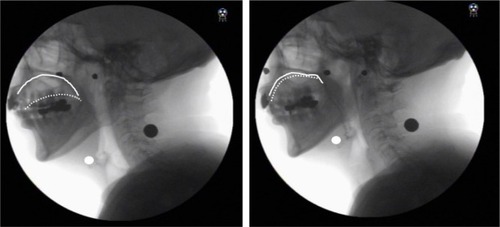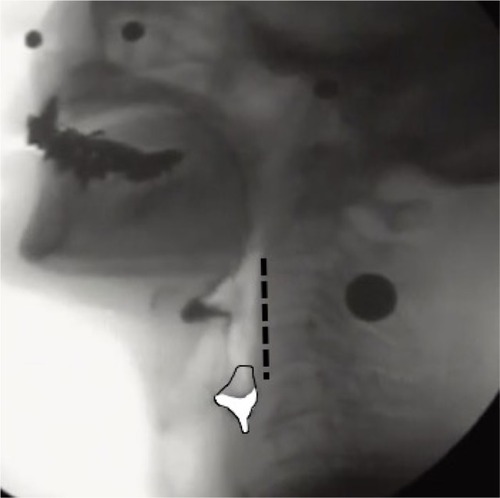Figures & data
Figure 1 Tongue-pressure resistance training.

Figure 2 Lateral radiogram demonstrating the x- and y-axes.

Figure 3 Example of pixel-based measurement of pharyngeal residue in the piriform sinus.

Table 3 Correlations between PAS scores and NRRS and the other variables
Table 2 Pre- and post-exercise swallowing function comparison
Table 1 Pre- and post-exercise comparison of hyoid bone kinematics
